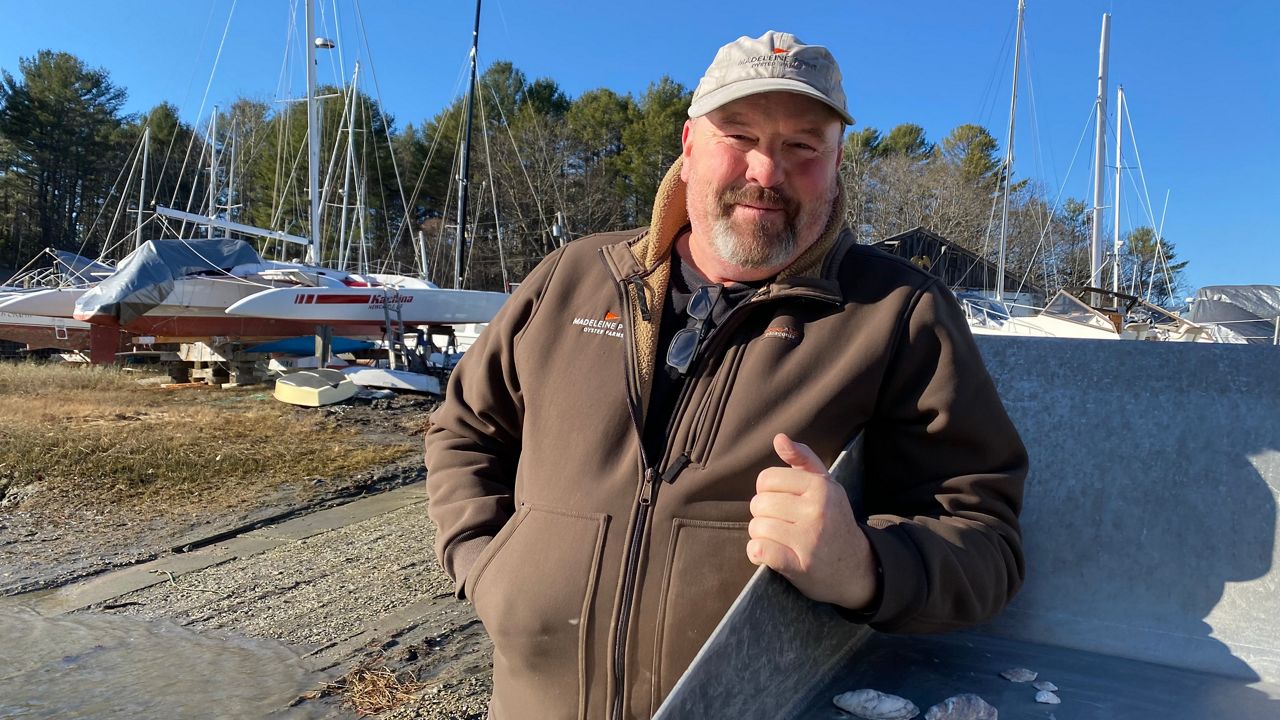Thomas Henninger knows how to grow oysters.
But when it came time to invest in new equipment that would make his business more efficient, he wasn’t sure where to start.
That’s when the Maine Aquaculture Association stepped in to give him the support he needs to grow oysters and grow his business.
“When I knew what capital I needed, I was terrified,” Henninger said Monday as he stood on a dock at Sea Meadow Marine in Yarmouth. “I had to really learn how to tighten things up, have a real inventory and be able to make predictions about the future.”
Henninger, owner of Madeleine Point Oyster Farms, pointed to the Cousins River behind him to show where he incubates one millimeter oysters until they reach 14 millimeters. After that, they are relocated to a separate area where it will take another two years to grow to full size.
Henninger is one of the beneficiaries of the aquaculture association’s Leading Maine’s Beginning Aquaculture Farmers to a Sustainable Business Future program, which began last year with a pilot project and will continue this year thanks to a new $91,000 federal grant.
So far, the program has helped more than 70 aquaculture farmers in Maine with things such as business planning, risk management, marketing, diversification and setting benchmarks.
“Like their terrestrial counterparts, sea farmers face challenges including economic risk, climate and regulations,” Christian Brayden, project manager for the association, said. “Unlike land-based farming, aquaculture is a young and dynamic sector with meaningful potential for development of best practices and vibrant growth.”
Aquaculture is an $85 million to $110 million a year business in Maine. About 200 farms employ more than 700 people year-round, according to the association.
Aquaculture farmers in Maine produce more than 25 diverse species, the most of any state. Topping the list are salmon, oysters, mussels and kelp, said Afton Vigue, outreach and development specialist for the association.
“Most of the farms are family-owned businesses,” she said. “Most of them are smaller than small, microscale, one person, very, very tiny operations. It’s been core to MAA’s mission to support new and beginning farmers and have them grow and be sustainable and be successful so we can nurture that next generation of sea farmers. That’s really the future of Maine aquaculture and working waterfronts.”
And while many Mainers and visitors appreciate the scenic views and the bounty of the crop, what the new grant enables is work on the nitty-gritty business side that includes spreadsheets, negotiating with banks and business plans.
“These are businesses,” she said. “We want the farmers to farm. We want to make it easier for them to do their thing. None of this works without making money.”
Henninger’s business includes his wife and two sons, and recently, the addition of a full-time employee.
Henninger started oyster farming as a young boy, helping to dredge oysters from the bottom of the ocean.
“When I learned about this method where we could grow oysters in floating cages and have a business that’s ecologically restorative, I got very, very interested,” he said.



